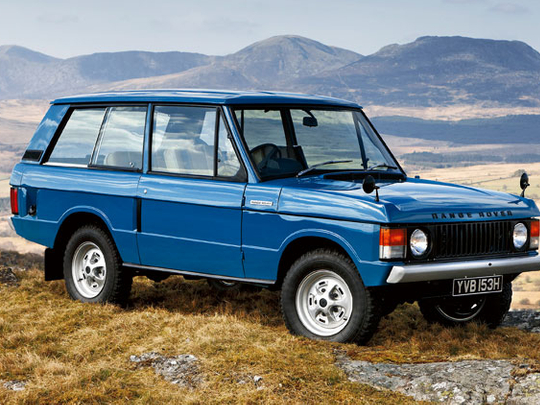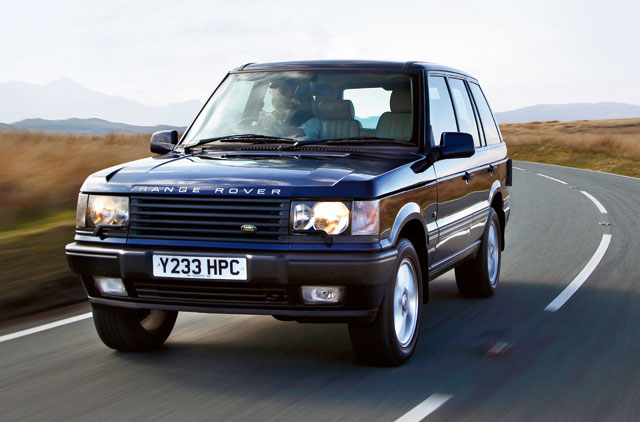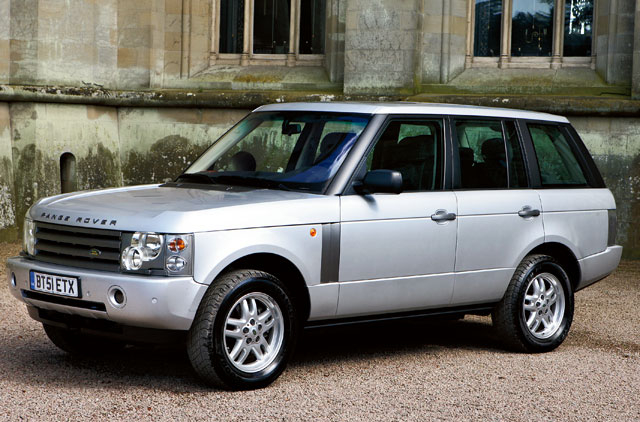
Range Rover Classic - 1970
That's what they called the first iteration - which was initially billed the Range Rover Station Wagon. Given its Land Rover origins, the emphasis was on its towing capacity. Early advertisements touted its ability of ‘roughing it in luxury' and the fact that it was ‘the world's first luxury 4x4'.
The Classic lasted for 25 years. By the '80s, the vehicle became more luxurious. Cabin trim was regularly upgraded, and carpet, leather upholstery and wood trim made the Range Rover a viable alternative to luxury saloon cars - again the first 4x4 to do so.
The need for a four-door model had been identified even as early as 18 months after the launch of the Classic. A four-door prototype - with hatchback rear end - was built. But it didn't go into production until 1981. Automatic transmission didn't become an option until 1982.
Design: "A child could draw the basic shape, so it's instantly recognisable in the same way as a Mini or a Porsche 911 or a Volkswagen Beetle, making it very successful," says former design director Geoff Upex, who designed the current model. Some of the elements that make up a Range Rover design are: the simplicity of the side elevation, the relationship of the glass to the body, the ‘floating' roof (caused by the black rather than body colour roof pillars) and the bonnet.
The same is true of the inside of the car. It was designed so people could sit as comfortably as possible and have the best view. Form followed function. The functionality led to a simple style and shape.
Technology: The Range Rover was among the first SUVs to use the long-travel coil springs instead of leaf springs. The new suspension was a key part of the improvement the designers wanted. A rear self-levelling unit maintained handling and ride quality irrespective of load. It was also the first SUV to use front and rear disc brakes for improved braking power at high speed.
The 3.5-litre aluminium V8 was light, powerful, torquey and mechanically simple. It was mated to a four-speed manual gearbox. It had a permanent four-wheel drive system. All other 4x4s of the time, including the Land Rover, had selectable 4x4. This meant that the Range Rover did not need to have a heavy rear axle like other SUVs. Thus, a lighter vehicle.
The Range Rover was also the first 4x4 to be fitted with ABS anti-lock brakes, which were offered as standard on the top-line model from 1989. In 1992, the Range Rover Classic was the first 4x4 to be fitted with electronic traction control. Initially fitted on the rear axle only, but soon extended to all four wheels, it gave a boost to the vehicle's off-road ability by transferring torque to the wheel offering the most grip. It also had improved on-road safety.
The Range Rover was also the first 4x4 to boast an automatic electronic air suspension in 1992. This was first available in the long-wheelbase (LSE) version that was introduced the same year. Five ride height settings could be dialled.
Electronic air suspension was standard on the second- and third-generation Range Rovers.
The Range Rover was originally specified with an all-aluminium body, taking after big brother Land Rover. For production, all the panels were aluminium, except for bonnet and tailgate. Apart from the bonnet and boot, all body panels were made from lightweight corrosion-resistant aluminium.
Second-generation Range Rover, the P38a - 1994
The next generation RR, known as P38a (because it was developed in building 38A in the Solihull factory), grew in luxury without compromising on off-road ability.
Design: The designer retained the Classic's basic shape since the car was so successful. Key design features of the Classic model such as the command driving position, the floating roof, the deep glass area and low waistline, wrap-over bonnet, distinctive rear ‘E' pillar, two-piece tailgate and the straight feature lines were retained. Burr walnut and leather upholstery were introduced.
Technology: Three engines were offered, including a BMW 2.5 six-cylinder turbo diesel - which offered better performance than the old Classic diesel - and both 3.9 and 4.6-litre versions of the aluminium Rover V8. The 4.6 achieved a top speed of 200kmph and 0-100 acceleration in 9.3 seconds, the fastest production RR until then. The height-adjustable suspension was further developed for P38a, improving both ride comfort and off-road ability.
Third-generation Range Rover, the L322 - 2001
Launched in 2001, the latest Range Rover scaled new heights in the 4x4 sector in both luxury and on- and off-road capability.
Among the new features were the stiffer monocoque body (replacing the traditional 4x4 ladder frame) and the fully independent suspension with interconnected air springs (nearly all 4x4s had, and many still have, rigid axles).
The upgraded interior was acknowledged as one of the best. Although the Range Rover name was originally applied to a single model, the company expanded the brand with the smaller and sportier Range Rover Sport line launched in 2005.
Design: All the classic Range Rover design cues continued with the third-generation model. The new car was bigger and more spacious. It also included distinctive head- and tail-lamps and ‘Brunel' finish power vents on the flanks.
The interior saw a big improvement over its predecessor. The design team took inspiration from products as diverse as audio equipment, yachts, first-class airline seating, fine furniture and jewellery. This was combined with the classic ‘wood and leather' Range Rover experience.
Technology: The main improvements in the third-generation Range Rover were its suite of electronic chassis and braking aids. They include dynamic stability control (DSC), hill descent control (HDC) - a Land Rover invention, electronic brakeforce distribution (EBD) and emergency brake assist (EBA).
The 2010 Range Rover also featured TFT (thin film transistor) ‘virtual' instruments. With this, the instrumentation displays can change, depending on the situation or safety requirements. For instance, major warning signs can momentarily replace dials; satellite navigation instructions can temporarily supplant a less important display when approaching a crucial junction. Numbers are magnified as the speedometer sweeps around the dial.
This Range Rover was also the first car with a ‘dual-view' centre screen allowing driver and passenger to watch the same screen but see different images. The driver can check navigation while the passenger can watch a DVD, depending on the angle at which the screen is viewed.
Range Rover: the journey
1966 Work begins on the first Range Rover prototype, known as the ‘100-inch station wagon’.
1970 The original two-door Range Rover – known as the Classic – goes on sale.
1977 A modified Range Rover wins the 4x4 class in the London-Sydney Marathon.
1979 A specially modified Range Rover wins the first Paris-Dakar rally (a Range Rover wins again in 1981).
1981 First production four-door Range Rover, with the first factory-produced limited-edition.
1989 Range Rover is the world’s first 4x4 to be fitted with ABS anti-lock brakes.
1990 Limited Edition CSK – named after founder Charles Spencer King – is launched.
1994 The second-generation (P38a) Range Rover goes on sale. Three engines offered.
1996 Range Rover Classic bows out after total production of 317,615 units.
1999 The limited-edition Range Rover Linley appears at the London Motor Show.
2001 The third generation all-new Range Rover (L322) is launched, with a monocoque body.
2010 On June 17, Range Rover celebrates its 40th anniversary.













